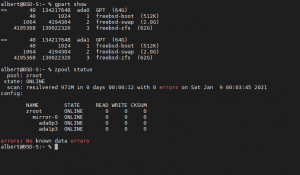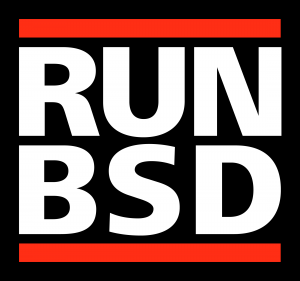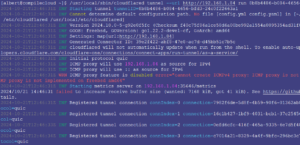If you are a WordPress user or prettend to become one and you have some IT administration knowledge this guide is of your interest. Many hostings already provide easy point and click solutions to administer WordPress over SSL. However you may be self hosting WordPress or you’re just a curious person. What is TLS? TLS […]

WordPress administration over SSL

How to configure a Virtual Host in Apache
You may have just one website and that is ok. If that is your case you can avoid this entire chapter. But some of you may also have several websites. And quite probably you want to use one single public ip to resolve all the domains you have. The Apache documentation is the main resource […]

Linux VS open source UNIX
Linux is the mainstream UNIX-like platform of choice in the modern world. There are valid open source code base alternatives from which many businesses have benefited from. This is a different approach on both.

How to replace a disk on a ZFS mirror pool
It’s happened to me, it’s happened to you, it’s happened more than one million times and it will still happen in the future. You run out of disk space or a disk fails. Nowadays you are using ZFS, and instead of having a fancy RAIDZ, because you still don’t need it, you are using a […]

How to configure the IPFW firewall on FreeBSD
Among the three possible firewalls on FreeBSD (choice is always nice) IPFW is the in-house built one. There is a default, easy way, configuration path but if one needs to build a box to act as a dedicated network appliance with packet filtering capacity fine tunning the IPFW firewall configuration is more than desirable. Before […]

How to import iocage jails to Bastille on FreeBSD 13
Being a fan and heavy user of FreeBSD jails, I’ve been using iocage for years now. However, iocage is not the only tool capable of making abstractions on top of the jail infrastructure in FreeBSD to make it easier to manage in a not just easier way, but quicker, centralized manner. Bastille is the other […]

FreeBSD Jails
The FreeBSD jails is a virtualization technology you may have skipped for too long. It is an operating system level virtualization and is one of the differential characteristics of FreeBSD from Linux. Solaris took it to the main corporate use with Zones and as it couldn’t be any other way the Illumos folks also play […]

How to compile cloudflared in FreeBSD 13/14
I happen to self-host my websites using Cloudflare’s services (article 1, article 2). Since the FreeBSD port seems to be delaying its releases and Cloudflare’s policy on maintaining versions only considers 1 year old code, in an act of prevention I have learnt, and I am publishing, how to compile cloudflared in FreeBSD. Note: At […]

How to detect a WAF – Web Application Firewall
From a penetration testing perspective to identify if a Web Application Firewall (WAF) is in place is essential. The next question is, does an administrator need to know this? My view is, anyone who is in charge of any system that has implemented some sort of WAF needs to verify this tool is working, at […]

How to install the bash shell on FreeBSD
Believe it or not the Bash shell does not come installed on the system. By default FreeBSD uses the sh shell (after the rewrite under the BSD license on 1989 of the original Bourne Shell found on UNIX, which had inherited the ‘sh’ name from the original’s Thomson shell), the C shell or the tcsh […]
